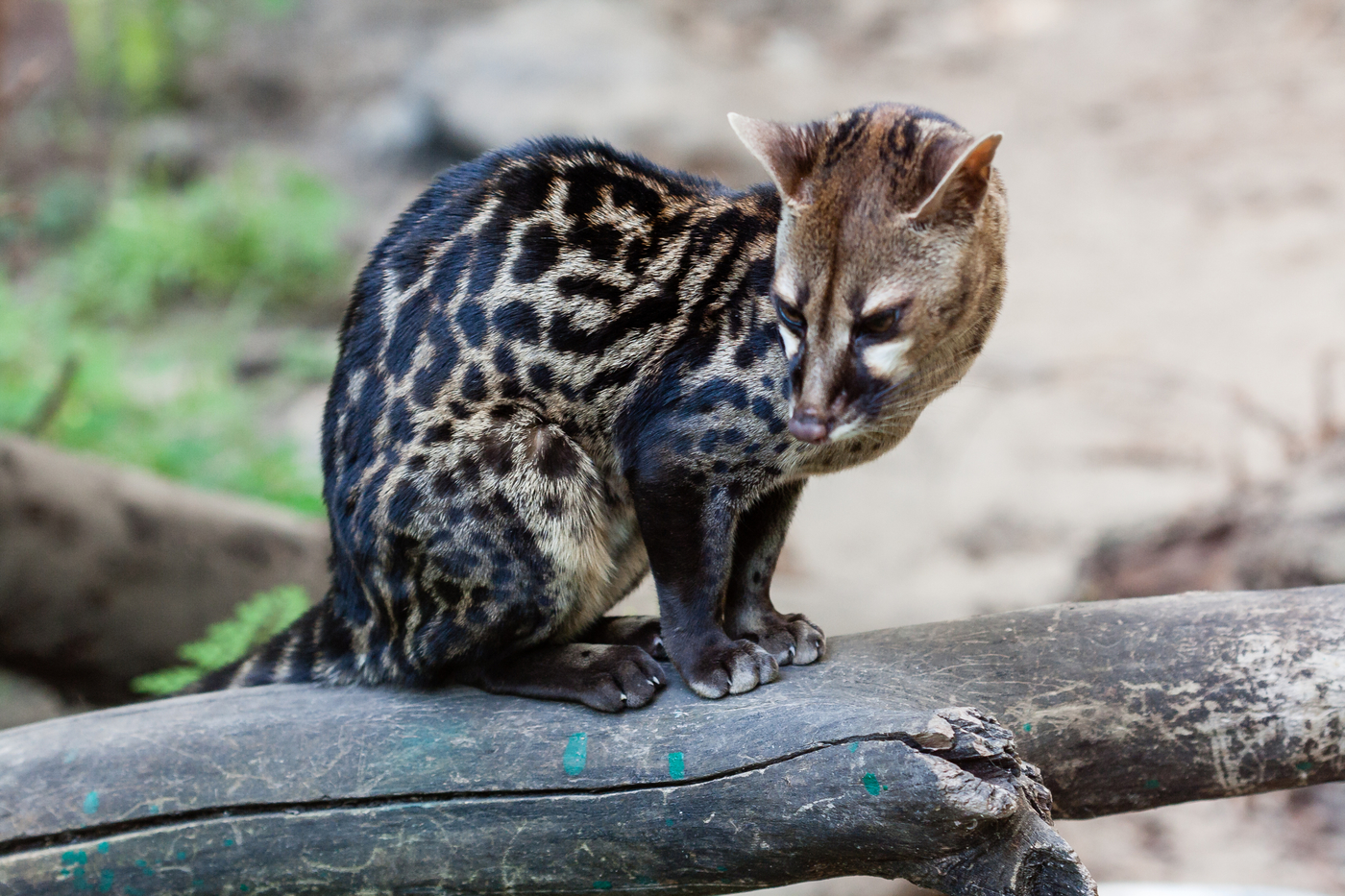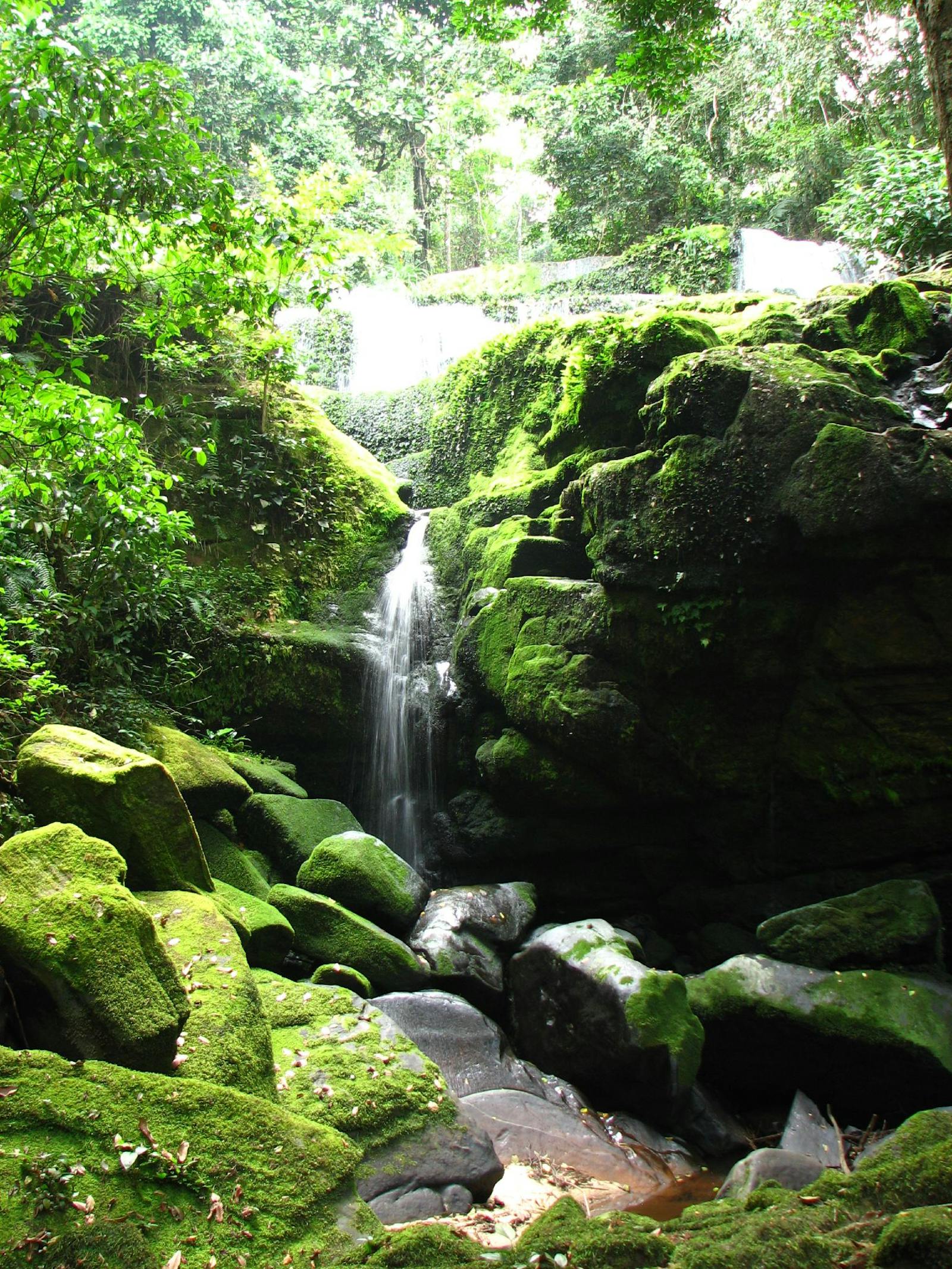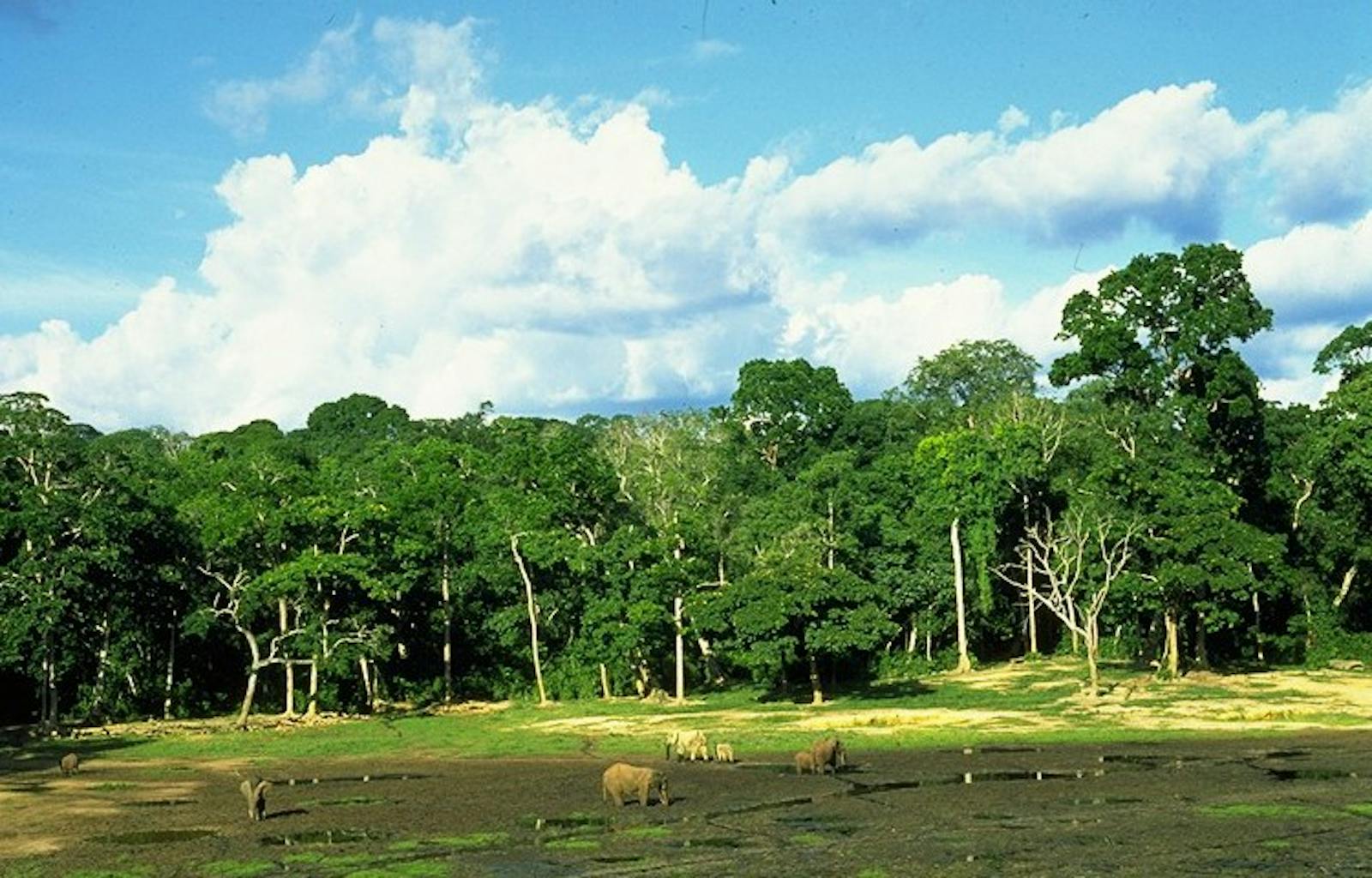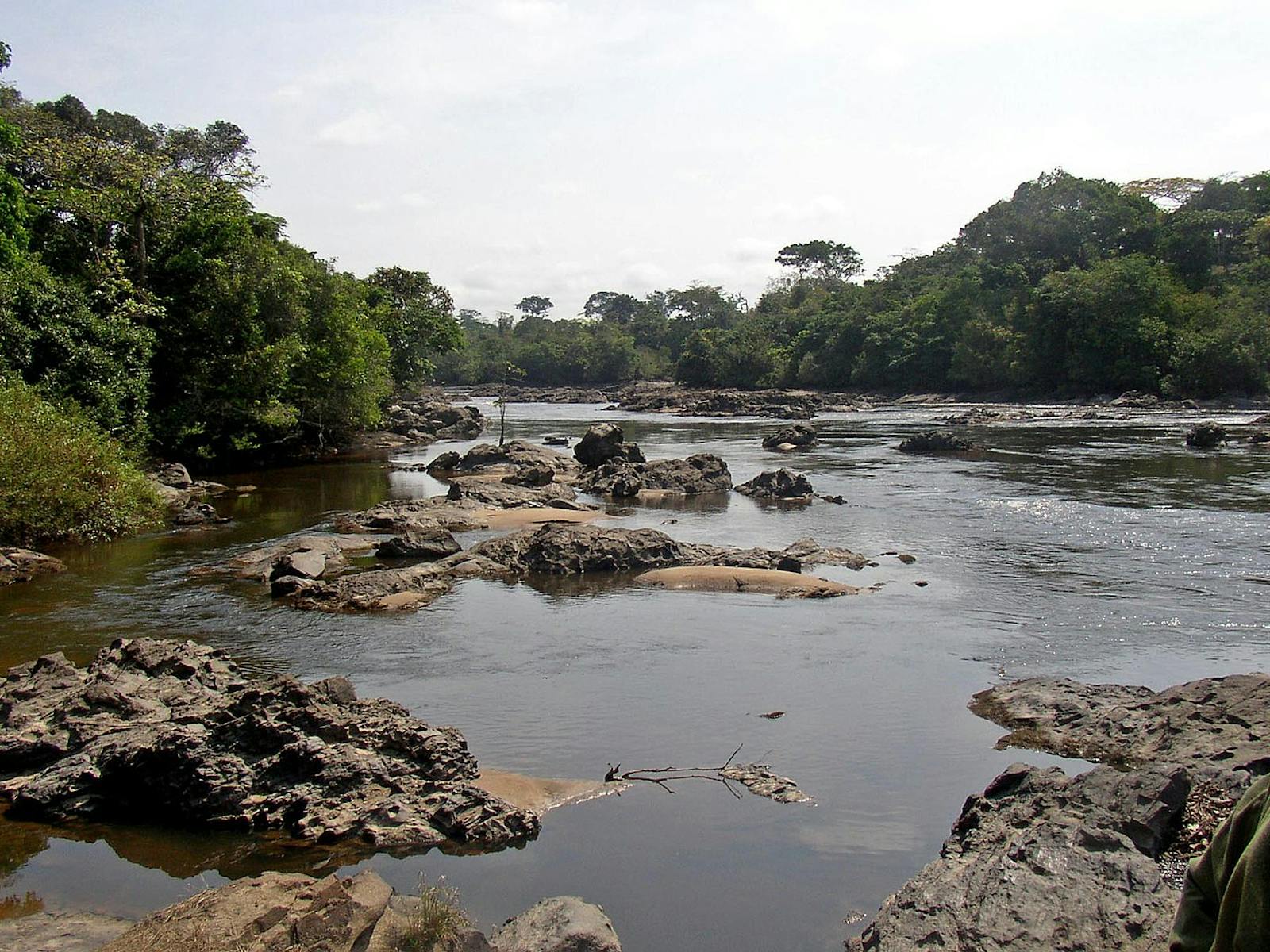Northeast Congolian Lowland Forests
The ecoregion’s land area is provided in units of 1,000 hectares. The conservation target is the Global Safety Net (GSN1) area for the given ecoregion. The protection level indicates the percentage of the GSN goal that is currently protected on a scale of 0-10. N/A means data is not available at this time.
Bioregion: North Congolian Lowland Forests (AT15)
Realm: Afrotropics
Ecoregion Size (1000 ha):
51,574
Ecoregion ID:
24
Conservation Target:
80%
Protection Level:
1
States: Democratic Republic of Congo, Central African Republic
The Northeast Congolian Lowland Forests support one of the highest mammalian diversities in Africa, and when combined with the Northwest Congolian Lowland Forests, contains the highest primate species richness in Africa, including important populations of lowland gorilla.
These lowland forests, nestled between the Albertine Rift Mountains in the east, the transitional savannah to the north, and the Congo River and its tributaries in the south and west, are teeming with life.

The flagship species of the Northeast Congolian Lowland Forests ecoregion is the giant forest genet. Image credit: Creative Commons
This ecoregion is located in the northeastern portion of the Democratic Republic of Congo (DRC), extending to the southeastern portion of the Central African Republic (CAR). Towards the south, the soils are primarily nitosols, which are less weathered and has high agricultural potential for crop cultivation; to the east, volcanic material from the Albertine Rift volcanoes also improves soil fertility. The climate is humid and tropical. Rainfall averages between 1,500 mm and 2,000 mm per annum, declining eastward towards the Albertine Rift Mountains, and with a well-marked dry season from January to March. The mean annual maximum temperature is between 27ºC and 33ºC and the mean minimum is between 15ºC and 21ºC, with variation mostly dependent on elevation.
There was notable forest disturbance during the arid period 2000 - 2500 BP when savannah and woodlands encroached on the forests leading to fragmentation of these habitats. Currently most of this ecoregion is lowland moist forest, with some transitional submontane forest in the east and some drier transitional types in the north. Tree species in these forests include Julbernardia seretii, Cynometra alexandri, and Gilbertiodendron dewevrei.
This entire ecoregion falls within the Guineo-Congolian regional center of endemism. The flora and fauna of this ecoregion is diverse and has large numbers of endemic species, which is highest on the lower slopes of the Albertine Rift Mountains. Around 1,500 species of plants are known from the Ituri region, including the endemic cycad Encephalartos ituriensis.
Mammals display high levels of endemism including the strictly endemic giant genet, aquatic genet, and mountain shrew. The aquatic genet is considered one of Africa’s rarest carnivores, previously only known from museum specimen collections and has been listed as Data Deficient on the IUCN Red List for over 9 years for the difficulty to find them in the wild. Near endemic species include okapi, the owl-faced monkey, L’Hoest’s monkey, and the pied bat. The avifauna includes two strictly endemic species: Neumann’s coucal and the golden-naped weaver. There are seven strictly endemic species of amphibians, including the olive shovelnose and Kigulube reed frog.
The full extent of forest easily exceeds 100,000 km2, and much of this is continuous. In the DRC, an important part of the Ituri forest is now protected within the Okapi Wildlife Reserve. Other lowland forest areas are protected within the Maïko National Park, the Yangambi Biosphere Reserve, Rubi-Tele hunting ground, and the Maika Penege Hunting area Reserve.
The human population is highest in the east close to the Albertine Rift, reaching densities of 50 persons per km2, and lowest in the center of the rainforest, falling to less than 5 persons per km2. Mining of gold, diamonds, and the rare metal coltan have already seriously impacted many important forest areas, such as Maïko, Ituri, and the Kahuzi Biega lowlands. Bushmeat hunting, often associated with illegal mining, is a major threat to larger animals, even in the remote Ituri forest.
Elephant poaching has also had a major impact in this region, even in protected areas. Logging has occurred in several locations, but was largely interrupted due to the war in the DRC, however, there are many logging concessions in the Ituri region due to its relative security. Conflicts in Rwanda, Burundi, and eastern DRC in the past decades have had serious impacts on protected area management capabilities, and have led to the widespread migrations of refugees. In some places these refugees have cleared large areas of forest for subsistence agriculture.
The priority conservation actions for the next decade will be to: 1) support local people to effectively manage the community reserves and sustainably use the forests natural resources; 2) continue implementing the 2015-2020 DRC REDD+ Investment Plan including improving natural resource governance in Ituri; and 3) create awareness and encourage community stewardship over the forest and its natural resources.
Citations
1. Central African Forest Initiative. 2018. Programmes approved by the National REDD+ Fund. [Online]. [Accessed 17 January]. Available from: http://www.cafi.org/content/cafi/en/home/partner-countries/democratic-republic-of-the-congo/drc-fonaredd-programmes.html
2. European Commission. 2016. Larger than Elephants, Inputs for an EU strategic approach to wildlife conservation in Africa - regional analysis. Luxembourg: Publications Office of the European Union.
3. Maley, J., Doumenge, C., Giresse, P., Mahé, G., Philippon, N., Hubau, W., Lokonda, M.O., Tshibamba, J.M. and Chepstow-Lusty, A. 2017. Late Holocene forest contraction and fragmentation in central Africa. Quaternary Research. pp.1-17.






